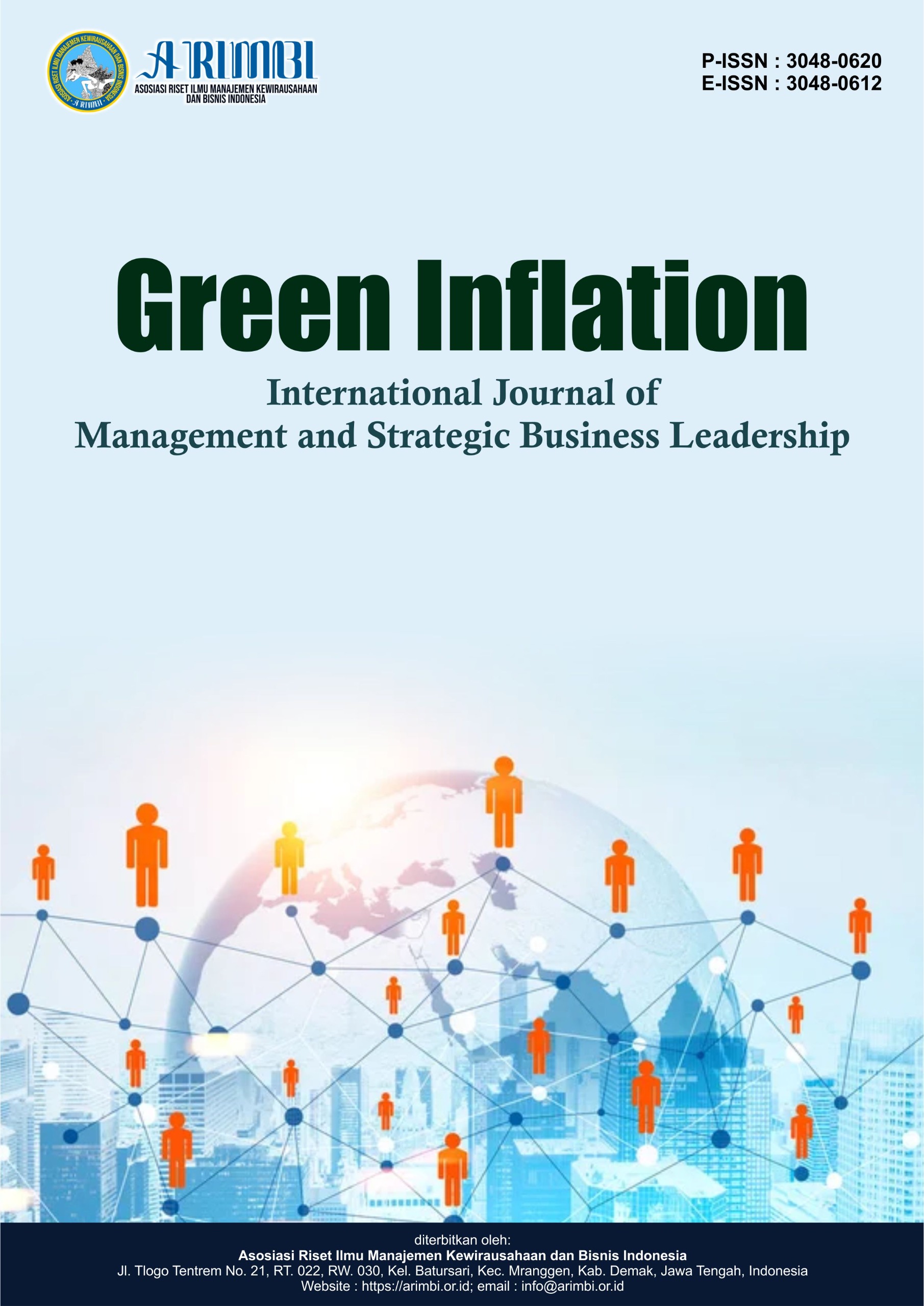The Influence of Work Environment, Salary, and Career De-velopment on Employee Performance Through Employee Commitment at Larissa Aesthetic Centre
DOI:
https://doi.org/10.61132/greeninflation.v2i3.517Keywords:
Career Development, Employee Commitment, Employee Performance, Sallary, Work EnvironmentAbstract
This study aims to analyze the influence of work environment, salary, and career development on employee performance at Larissa Aesthetic Center through employee commitment as a mediating variable. The importance of optimizing employee performance in supporting business growth requires appropriate efforts and strategies to maximize existing resources in the work environment. Employees who value the work environment because it fosters a sense of well-being and enthusiasm at work. Salary is one of the factors that influences performance, in line with compensation that meets expectations as a form of responsibility in the workplace. Employee career development is seen as a call for progress, where competent workers facilitate the organization in becoming a solution for clients.The method used in this study employs an explanatory approach to uncover the relationships between variables and emphasizes causal numerical data. The study population consists of 65 employees, with the sampling technique using a census, where the entire population serves as the study sample. This research utilizes primary data obtained through questionnaire completion. Secondary data is derived from relevant documentation related to the research topic. Data analysis employs path analysis to test the relationships between research variables. The results of this study indicate that the work environment, salary, and career development have a significant influence on employee performance at Larissa Aesthetic Center, through the support of employee commitment as a mediating variable. The findings of this study can serve as a reference for business actors as a basis for consideration in actions related to human resources.
Downloads
References
P. Afandi, Concept & Indicator Human Resources Management for Management Research, 1st ed. Yogyakarta: Deepublish, 2020.
M. F. Arismunandar, "The Influence of Compensation, Job Analysis, and Career Development Patterns on Employee Performance," Maneggio: Journal of Master of Management, vol. 3, no. 2, 2020.
S. R. Azikin, "The Influence of Work Environment and Compensation on Employee Performance through Organizational Commitment at the Education and Culture Office of Bantaeng Regency," Journal of Management, vol. 2, no. 1, 2019.
Z. Basem, "Analysis of Discipline, Organizational Commitment, Work Environment, and Their Influence on Employee Performance at PT. Adhiyasa Bangkinang," Influence: International Journal of Science Review, vol. 4, no. 2, 2022. https://doi.org/10.54783/influencejournal.v4i2.28
A. Gunawan and C. Ardana, "The Influence of Job Insecurity, Organizational Culture, and Work Environment on Organizational Commitment," E-Journal of Management, vol. 9, no. 5, pp. 1858–1878, 2020.
B. Lilyana, V. De Yusa, and I. Yatami, "The Influence of Physical Work Environment and Non-Financial Compensation on the Performance of Production Department Employees at PT. Rudant Maju Selaras," Jurnal Manajemen Mandiri Saburai (JMMS), vol. 5, no. 3, pp. 163–170, 2021. https://doi.org/10.24967/jmms.v5i3.1296
T. H. Handoko, Personnel Management & Human Resources, 2nd ed. Yogyakarta: BPFE, 2008.
M. S. P. Hasibuan, Human Resource Management, Revised ed. Jakarta: Bumi Aksara, 2017.
F. Luthans, Organizational Behavior, 10th ed. Yogyakarta: ANDI, 2006.
M. Marhawati, "The Influence of Organizational Culture and Compensation on Employee Performance with Motivation as an Intervening Variable at Jala Ammari Hospital in Makassar City," Ph.D. dissertation, Hasanuddin University, 2022.
G. Northcraft and M. A. Neale, Organization Behavior: A Management Challenge, 2nd ed. Florida: The Dryden Press, Harcourt Brace College Publishers, 2013.
A. Oktavia and R. Astiningrum, "Analysis of Salaries, Allowances, and Work Facilities on Employee Performance at the Regional Secretariat of Nganjuk Regency," Jurnal Otonomi, vol. 21, no. 1, Apr. 2021. https://doi.org/10.32503/otonomi.v21i1.1604
S. P. Robbins and T. A. Judge, Organizational Behavior, 12th ed. New Jersey: Pearson, 2007.
G. T. Santoso, "The Influence of Organizational Commitment and Discipline Levels on Employee Performance Through Job Satisfaction as an Intervening Variable (A Case Study at the Department of Trade, Industry, Cooperatives, and Micro, Small, and Medium Enterprises in Serang City)," Tirtayasa Business and Management Research Journal, 2020.
Sugiyono, Educational Research Methods: Quantitative, Qualitative, and R&D Approaches, Bandung: Alfabeta, 2014.
V. W. Sujarweni, Business and Economic Research Methodology, Yogyakarta: Pustaka Baru, 2015.
E. H. Rachmawanto and C. A. Sari, "Fast and Efficient Image Watermarking Algorithm Using Discrete Tchebichef Transform," in 2017 5th International Conference on Cyber and IT Service Management (CITSM), Aug. 2017, pp. 1–5. https://doi.org/10.1109/CITSM.2017.8089229
A. Vyas, S. Yu, and J. Paik, Fundamentals of Digital Image Processing, A John Wiley & Sons, 2018, pp. 3–11. https://doi.org/10.1007/978-981-10-7272-7
ICCC FBI, Internet Crime Report 2021, 2022. [Online]. Available: https://www.ic3.gov/Media/PDF/AnnualReport/2021_IC3Report.pdf
USC Viterbi School of Engineering, SIPI Image Database. [Online]. Available: http://sipi.usc.edu/database/ (accessed Mar. 27, 2019).
Downloads
Published
How to Cite
Issue
Section
License
Copyright (c) 2025 Green Inflation: International Journal of Management and Strategic Business Leadership

This work is licensed under a Creative Commons Attribution-ShareAlike 4.0 International License.




